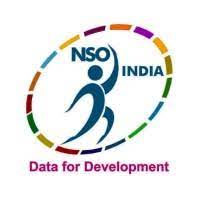Today’s Current Affairs: 14th Mar 2024 for UPSC IAS exams, State PSC exams, SSC CGL, State SSC, RRB, Railways, Banking Exam & IBPS, etc
Table of Contents
Democracy Report 2024:

India has declined to become “one of the worst autocracies,” according to the ‘Democracy Report 2024’ by the V-Dem Institute.
- Report released by V-Dem Institute at Sweden’s University of Gothenburg
- India ranks 104 in LDI, slipped to 110 in the Electoral Democracy Index, 92 in the Liberal Component Index
- The report highlighted deteriorating components of democracy, such as freedom of expression, clean elections, media independence, and civil society participation
- 42 countries and about 3 billion people affected by increasing autocratization
- South and Central Asia second most autocratic region globally, Bhutan sole liberal democra
- Indices V-Dem LDI combines indicators from the Liberal Component Index (LCI) and Electoral Democracy Index (EDI)
- EDI Measures fairness of elections, freedom of expression, information, association, and suffrage
- LCI Emphasizes the protection of individual and minority rights against state oppression and majority rule
Pritzker Architecture Prize 2024:

Japanese architect Riken Yamamoto was declared the winner of the prestigious 2024 Pritzker Architecture Prize, often called the “Architecture Nobel”. This award is the highest international honour in the field. Yamamoto is the ninth laureate from Japan.
- The prize was established by Jay A Pritzker and his wife Cindy in 1979 to honour living architects whose work demonstrates talent, vision, and commitment to humanity and the built environment.
- Riken Yamamoto’s architectural vision prioritises family and community, with a focus on the visible and tangible aspects of architecture.
- Yamamoto’s designs often incorporate innovative concepts such as “relational living” and preserving natural landscapes, as seen in projects like Hotakubo Housing and the Yokosuka Museum of Art.
- Balkrishna Doshi, is the first Indian architect to win a Pritzker Prize (2018).
- His renowned work is the Aranya Low-Cost Housing Complex, located in the city of Indore.
- The complex connects a community through a cluster of buildings stitched together by a network of courtyards and pathways.
Karnataka Ban Harmful Food Colouring Agents:

The Karnataka Government has announced a ban on the use of harmful colouring agents in popular food items like cotton candy and Gobi Manchurian.
- The ban targets Rodamine B in cotton candy and imposes restrictions on Tartrazine usage in Gobi Manchurian.
Rhodamine B is a chemical compound commonly employed in synthetic dyes for colouring silk, jute, leather, cotton, and wool, as well as in the cosmetics and plastics industries. - Tartrazine is a bright yellow azo dye that is more stable and a cheaper alternative to natural food dyes.
- According to the Food Safety and Standards Authority of India (FSSAI), no colouring matter should be added to food unless permitted in the Food Safety and Standards (Food Products Standards and Food Additives) Regulation, 2011.
Connectome:

The human brain, comprising billions of neurons, forms a complex network vital for our existence and cognition. Understanding this intricate network, known as the connectome, offers profound insights into brain function and neurological disorders.
- Connectome Concept represents a comprehensive map of neural connections, akin to a blueprint illustrating the electrical and chemical signals exchanged between neurons.
- A neuron consists of a cell body containing the nucleus, dendrites for receiving input, and an axon for sending messages, sometimes enveloped by a myelin sheath for faster signal transmission.
- Neurons communicate through synapses, where dendrites receive chemical signals, convert them to electrical impulses, and transmit them through axons to other neurons.
- Despite the brain’s complexity and data volume, the connectome simplifies scientists’ understanding, facilitating advancements in neuroscience and neurological health research.
- Mapping the connectome aids in comprehending brain function and the impact of conditions like Attention deficit hyperactivity disorder (ADHD) and Alzheimer’s disease on neural processes.
National Sample Survey Office (NSSO): 2023

According to the Periodic Labour Force Survey (PLFS), conducted by the National Sample Survey Office (NSSO), in 2023, India’s unemployment rate has dropped significantly, marking the lowest in the past three years.
- The PLFS gives estimates of Key employment and unemployment Indicators like, the Labour Force Participation Rates (LFPR), Worker Population Ratio (WPR), Unemployment Rate (UR), etc and the Activity Status- ‘Usual Status’ and ‘Current Weekly Status’.
Highlights of the Report:
- India’s unemployment rate for individuals aged 15 and above has dropped to 3.1% in 2023, marking the lowest in the past three years.
- The unemployment rate was at 3.6% in 2022 and 4.2% in 2021.
- There is a decline in the unemployment rate among females to 3% in 2023 from 3.3% in 2022 and 3.4% in 2021.
- Similarly, for males, it decreased to 3.2% in 2023 from 3.7% in 2022 and 4.5% in 2021.
- There is a recovery in the employment scenario post the impact of the Covid-19 pandemic, with increased economic activity after the lifting of lockdowns by the Centre and states.
- Urban areas witnessed a reduction to 5.2% in 2023 from 5.9% in 2022 and 6.5% in 2021, while rural areas experienced a decrease to 2.4% in 2023 from 2.8% in 2022 and 3.3% in 2021.
- The LFPR in Current Weekly Status (CWS) for individuals aged 15 and above in urban areas rose to 56.2% in 2023, showing an upward trajectory from 52.8% in 2022 and 51.8% in 2021.
- This positive employment data comes on the heels of recent reports indicating India’s economic growth surging to 8.4% in the third quarter of 2023-24.
- Sectors such as manufacturing, mining & quarrying, and construction played a pivotal role in driving this growth, as per data released by the NSO.
- The NSO’s second advance estimate pegs India’s growth at 7.6% for the entire fiscal year 2023-24, surpassing the initial projection of 7.3% released in January 2024.
Naval Drill In The Gulf Of Oman:

China, Iran, and Russia recently began a joint naval drill in the Gulf of Oman.
- The Gulf of Oman, also known as the Gulf of Makran, is the western extension of the Arabian Sea and lies in the Middle East.
- It forms the only entrance to the Persian Gulf from the Indian Ocean.
- The Gulf connects the Arabian Sea with the Strait of Hormuz, which then empties into the Persian Gulf.
- Bordering Countries: It is bordered by Pakistan and Iran in the north; by the United Arab Emirates (UAE) in the west and by Oman in the south. Muscat, the capital of Oman, is located on the coast of the gulf.
- It is at its widest point between Cape al-Hadd in Oman and the Gwadar Bay on the Iran-Pakistan border. The gulf is relatively shallow because of its origin as a fissure in the mountain spine now divided between Iran and Oman.
- Some of the significant islands that are located in the Gulf of Oman include Sheytan Island, Al Fahal Island, Dimaniy at Islands, and the Sawadi Islands.
- The major international shipping ports that are situated in the Gulf of Oman include Port Sultan Qaboos Muttrah in Muscat, Oman; Chabahar Port in Iran; the Port of Fujairah and Khor Fakkan Container Terminal in the UAE.
- Roughly one-third of the world’s oil is exported via the Strait of Hormuz and the Gulf of Oman.
Index Of Industrial Production : January 2024

The Ministry of Statistics and Programme Implementation recently released the Quick Estimates of the Index of Industrial Production (IIP) for January 2024, revealing a growth of 3.8 percent.
- Index of Industrial Production (IIP) is one of the prime indicators of economic development for the measurement of trends in the behavior of industrial production over a period of time with reference to a chosen base year.
- It is a short-term indicator measuring industrial growth until the actual result of detailed industrial surveys become available.
- It indicates the relative change in physical production in the field of industries during a specified year as compared to the previous year.
- It is computed and published by the Central Statistical Organisation (CSO), Ministry of Statistics and Programme Implementation, on a monthly basis.
Hyodol Robot : To Beat Loneliness Among Elders

South Korean company Hyodol has come up with a way to use Artificial Intelligence (AI) to beat loneliness among elders with dementia.
- The South Korean government is reported to have deployed around 7,000 Hyodol dolls to keep senior citizens ‘company’ and remind them to take medications. Loneliness among senior citizens is a growing social issue in South Korea.
- Hyodol Robot is an AI care robot that offers customised care for seniors. The robot does this by relying on data collected by living and having conversations with them.
- It can hold full conversations and it comes with a companion app and web monitoring platform for caretakers to monitor remotely.
- Besides, it comes with safety features that can raise an alert when no movement has been detected for a certain period of time.
- It also comes with touch interaction, check-ins, a health coach, voice messages, 24-hour voice reminders, music, quizzes, exercise suggestions, and more.
- Moreover, caregivers with access to the app will be able to send and receive voice messages, make group announcements, and monitor motion detection.
- The robot also continuously monitors the health condition of its users through health Q&A two times a day.
- It collects verbal/nonverbal data for 24 hours from the users through AI.
KIRTI Programme:

Union Minister for Youth Affairs and Sports inaugurated the unique Khelo India Rising Talent Identification (KIRTI) programme.
- KIRTI Programme is aimed at school children between nine and 18 years age group.
- The scheme will have two main objectives:
- To hunt talent from every nook and corner of the country and
- To use sports as a tool to curb addiction towards drugs and other gadgetry distractions.
- KIRTI aims to conduct 20 lakh assessments across the country throughout the year to identify talent through notified Talent Assessment Centres.
- KIRTI made a solid launch across 50 centres in India. Fifty thousand applicants are being assessed in the first phase across 10 sports, including athletics, boxing, wrestling, hockey, football and wrestling.
- KIRTI’s athlete-centric programme is conspicuous by its transparent selection methodology based on Information Technology.
- Data analytics based on Artificial Intelligence is being used to predict the sporting acumen in an aspiring athlete.
Uniform Code For Pharmaceutical Marketing Practices (UCPMP) 2024:

The Central Government recently rolled out a Uniform Code for Pharmaceutical Marketing Practices (UCPMP) for pharmaceutical companies.
- UCPMP 2024 has been implemented to control unethical practices in the pharma industry.
- The updated guidelines include drug endorsement, promotion, ethical conduct for medical representatives, and maintaining relationships with healthcare professionals.
- It prohibits pharma companies from offering gifts and travel facilities to healthcare professionals or their family members.
- The UCPMP mandates that medical representatives must not employ any inducement or subterfuge to gain an interview, and they must not pay, under any guise, for access to a healthcare professional.
- It also holds companies responsible for the actions of the medical representatives.
- It also bans the supply of free samples to those who are not qualified to prescribe such a product.
- Each pharma company also needs to maintain details such as product name, doctor name, the number of samples given, date of supply of free samples to healthcare practitioners, etc., and the monetary value of samples so distributed should not exceed two percent of the company’s domestic sales per year.
- All pharmaceutical associations must constitute an Ethics Committee for Pharmaceutical Marketing Practices (ECPMP), set up a dedicated UCPMP portal on their website, and take further necessary steps towards the implementation of this Code.
- It also lists in detail how the drug should be promoted, both in texts and in the audio-visual market.
- The information about drugs must be balanced, up-to-date, and verifiable, and must not mislead either directly or by implication.
- The pharma companies should not make claims and comparisons of their drug’s usefulness, and the word “safe” must not be used without qualification.
- The word “new” must not be used to describe any drug which has been generally available or any therapeutic intervention which has been generally promoted in India for more than a year.
- The responsibility for adherence to the code rests with the Chief Executive Officer of pharmaceutical companies.
- It also detailed the penalties for violating the code and how complaints will be handled.
- Any violations of the code will be addressed by the ECPMP, ensuring accountability and oversight.




